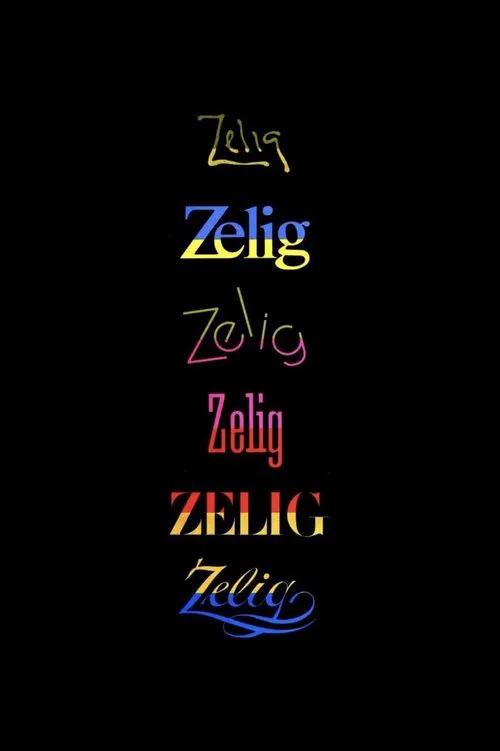Zelig

Plot
In the 1983 film 'Zelig,' director Woody Allen takes on a unique and intriguing subject that pokes fun at societal pressures, identity, and celebrity. The movie begins with a series of newsreel clips showcasing various people, including Woodrow Wilson, Babe Ruth, and a young couple. These clips, cleverly woven throughout the narrative, set the tone for the main protagonist, Leonard Zelig (played by Woody Allen), who becomes the subject of a fictional documentary. Leonard Zelig is not your ordinary person; he is a human chameleon with an extraordinary ability to transform himself into whomever he is around. He looks, dresses, and behaves like his surroundings, effortlessly adopting the mannerisms and traits of those close to him. After the Great Depression, Zelig's incredible adaptability and his talent for masquerading as various types of people quickly turn him into an overnight sensation, catapulting him into the spotlight. The documentary's narrator introduces Zelig with footage of him effortlessly mimicking Woodrow Wilson, which prompts the media to label him a genius and "Human Chameleon." People are captivated by his ability, and celebrities, including F. Scott Fitzgerald's character, are eager to meet him and witness his incredible talents firsthand. However, beneath the façade of Zelig's ability lies a fragile individual struggling to find his true identity. As the documentary delves deeper into his past, we see glimpses of his childhood, which reveal that Zelig was an awkward and isolated child who desperately sought acceptance and belonging from the people around him. His remarkable ability to adapt to his surroundings can be seen as both an escape from and an expression of this deep-seated need for validation. Zelig's relationships with others suffer as he becomes more and more entrenched in his persona, which often forces him to prioritize the desires and aspirations of those around him above his own. He becomes particularly smitten with an anthropologist named Dr. Eudora Fletcher (Mia Farrow), and as his relationship with her deepens, he is faced with the challenge of being true to himself while still meeting her expectations and desires. Throughout the film, Allen cleverly weaves together various genres and styles to create a unique narrative. At times, the documentary becomes a mockumentary, poking fun at the media's obsession with celebrities and people with unique talents. In other moments, it transforms into a satirical commentary on societal pressures to conform, which often leads individuals to sacrifice their authenticity in order to gain acceptance. The central question posed by 'Zelig' is: Can a person's true identity be masked forever, or will it eventually surface despite their greatest efforts to hide it? The answer is left ambiguous, much like Zelig himself, leaving audiences to ponder over their own identities and relationships with others. While many people become captivated by Zelig's incredible ability to adapt, few are aware that beneath this façade lies a complex web of insecurities and fears. As we delve deeper into Zelig's life, we come to understand that his incredible gift, which brought him fame and admiration, also made him intensely lonely, as he struggles to form genuine connections with others. In one poignant scene toward the end of the film, Zelig finally reveals his true self to Dr. Fletcher, stripping away the masks he had been wearing for years. This moment of authenticity, born from his love for her and a newfound recognition of his own identity, is perhaps the most profound revelation of the entire documentary. The final newsreel clips that conclude the film are a testament to the power of this revelation, as they show Zelig confidently embracing his vulnerability and uniqueness. This film leaves an enduring impact by reminding viewers of the importance of embracing our true selves, despite the societal pressures that might lead us to conform to what others expect of us. 'Zelig,' like many Woody Allen films, defies easy categorization, combining humor, social commentary, and a touch of philosophical introspection to create a narrative that challenges viewers to question the very nature of identity and belonging.
Reviews
Recommendations




